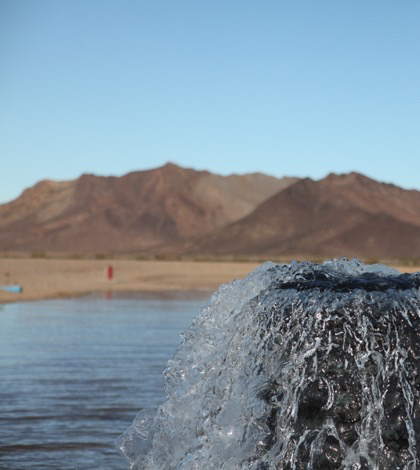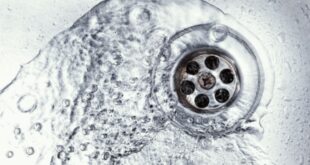The Fenner Valley Water Authority (FVWA) has released a new analysis by water chemistry expert Dr. David K. Kreamer, a professor of Hydrology & Geosciences at the University of Nevada, Las Vegas critiquing two opposition-funded papers to the Cadiz Valley Water Conservation, Recovery and Storage Project. FVWA is the public agency charged with operating and pre-project monitoring of the Cadiz Water Project in coordination with San Bernardino County.
Dr. Kreamer, who specializes in research on groundwater quality and chemistry, identified numerous methodological errors in the opposition-funded papers. His analysis as presented to FVWA concluded that allegations of a hydraulic connection between the aquifer system at Cadiz and desert springs in the watershed surrounding the Cadiz Project area, based on water chemistry, is “inconsistent and incompatible with the field evidence.”
Dr. Kreamer’s analysis reviews two studies funded by Mojave Desert Land Trust, an organization opposed to the Project — “Understanding the source of water for selected springs within the Mojave Trails National Monument, California” by Andy Zdon, M. Lee Davisson and Adam H. Love, published in Environmental Forensics and “Use of Radiocarbon Ages to Narrow Groundwater Recharge Estimates in the Southeastern Mojave Desert, USA,” by Zdon and Love, published in Hydrology.
Extensive studies were undertaken during preparation of the Cadiz Water Project Environmental Impact Report (EIR). They concluded that the Project’s operations in the Fenner Valley aquifer system would have no significant adverse impact on desert springs. The Project’s Groundwater Monitoring, Management and Mitigation Plan — which will be enforced by San Bernardino County – and the EIR require quarterly monitoring of Bonanza Spring and two additional springs, as well as other monitoring and mitigation features for the entire watershed system. Bonanza Spring is in the Clipper Mountains at an elevation of 2,100 feet. It is the nearest spring to Project operations, approximately 11 miles away from and 1,100 feet above the Cadiz Water Project’s future wellfield. Geologic study and field work produced last year, and reviewed by a multi-member panel, identified faults separating the groundwater aquifer at the Cadiz wellfield from the Bonanza Spring.
Additionally, the enforcement by San Bernardino County has been designed to protect the local environment through extensive monitoring and operating criteria – including a hard “floor” to operations. Enforcement will include immediate corrective measures to ensure the aquifer is managed sustainably before, during and after the life of the project, if necessary.
The Cadiz Water Project has received numerous validations of its plans, including its approval under the California Environmental Quality Act, its permitting by San Bernardino County and its affirmation by California’s Courts.
Following Dr. Kreamer’s presentation to the FVWA, Cadiz Inc. said in a statement, “from the start, the Project has been committed to environmental safety and sustainability. Dr. Kreamer’s analysis of the two opponent-funded reports seriously undermines opponents’ theories about potential impacts to springs attributable to the Project and further validates the extensive body of work confirming that the Cadiz Water Project can deliver a new source of water to 400,000 people across Southern California in a safe and sustainable way.”
In addition to Dr. Kreamer’s analysis, the FVWA Board also heard a report from Lee Odell, P.E., of Jacobs Engineering, who presented the successful results of three phases of pilot testing of water quality treatment technology at existing Cadiz wells conducted from 2015-2018. Project water is slated to be conveyed through the Colorado River Aqueduct (CRA) which is owned by Metropolitan Water District of Southern California.
Although water at Cadiz meets all state and federal drinking water standards without treatment, certain naturally occurring constituents such as chromium 6, arsenic, and nitrates, appear at levels higher than those presently in the CRA. Metropolitan had indicated last year it might require Cadiz to meet levels in the CRA, not only state and federal drinking water standards, before entering its facilities.
Odell’s report stated that testing was conducted to determine the feasibility of removing naturally occurring constituents prior to any Project water entering the aqueduct; testing successfully removed nearly 100 percent of chromium-6 present, bringing it to below 1 part per billion (ppb). The state standard for total chromium is 50 ppb while the federal standard is 100 ppb. Testing also showed that byproducts of treatment meet the regulatory standards for disposal at conventional landfill.
A Cadiz statement regarding Odell’s presentation to the FVWA Board noted that, “Cadiz water is very low in total dissolved solids and will provide a significant financial benefit to Southern California by reducing salts in the system. Naturally occurring chromium-6 appears in groundwater basins across California as it does at Cadiz, and we have made a commitment to pioneer a solution through treatment. By implementing successful, cost-effective treatment for Chromium-6, we have confidence that we will meet any standard for entry into the CRA and hope to assist other systems in California do the same.”
 California Water News Daily Your Source For Water News in California
California Water News Daily Your Source For Water News in California


